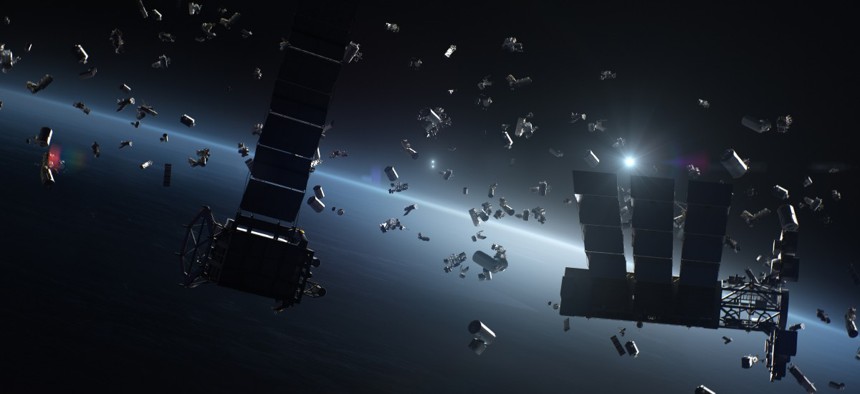How Government is Dealing With Flying Space Junk

EvgeniyShkolenko/Getty Images
Space junk, or orbital debris, has become a topic of increasing interest among several agencies and Congress.
There are more than 5,500 active satellites in orbit as of this spring, a number that is projected to grow to 58,000 by 2030, according to the Government Accountability Office. However, when these satellites are no longer in use and remain in space, this debris can become problematic.
Orbital debris, or space junk, “consists of human-made objects orbiting Earth that no longer serve a purpose, including mission-related and fragmentation debris, nonfunctional spacecraft and abandoned rocket stages,” according to NASA.
There is a brewing battle between the Federal Communications Commission and NASA about regulating orbital debris, with each agency staking its claim.
Specifically, the FCC has reduced the amount of time that satellites no longer in use must either be repurposed or de-orbit, from within 25 years to as soon as possible but within five years. The agency’s new rule applies to satellites that end their mission in or pass through the low-Earth orbit region—defined by NASA as anything with an altitude of 1,200 miles or 2,000 kilometers and below.
“The new 5-year rule for deorbiting satellites will mean more accountability and less risk of costly collisions that increase debris,” the FCC said after adopting the new rule.
However, lawmakers previously expressed concern about the FCC’s rule, claiming that the agency should coordinate with NASA, which is leading space debris efforts, including international ones. Congress sent a letter in 2020 to the FCC stating that it did not have clear authority to promulgate these regulations, which could cause confusion.
NASA previously pushed back at the FCC’s new rule when it commented in 2019 and 2020. When the FCC proposed the rule, NASA’s Science Mission Directorate stated that it agreed on having some limit, but noted the FCC’s proposal would affect its CubeSat missions that rely on the natural decay of orbits and would “burden” NASA by requiring it to obtain exceptions. NASA is also funding three research proposals on orbital debris.
In addition to the agencies, Congress has also shown interest in the topic. Most recently, it was included as part of the 2023 National Defense Authorization Act by requiring the secretary of defense to issue a report detailing the risk of orbital debris.
House lawmakers also recently introduced a bill on space situational awareness—which provides a starting point to determine where space objects are currently and their trajectory—to help create safe space operations, despite mounting concerns about orbital debris.






